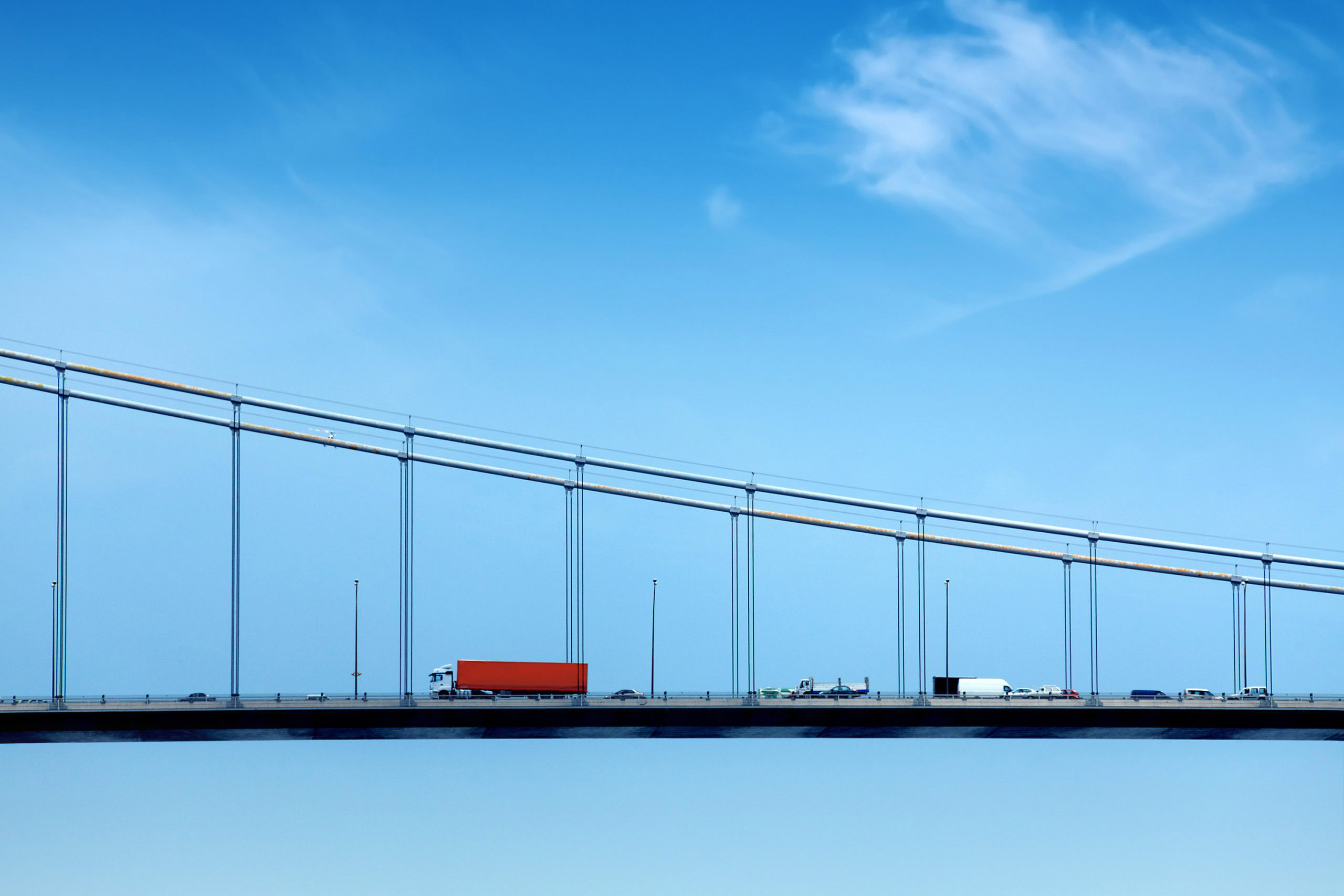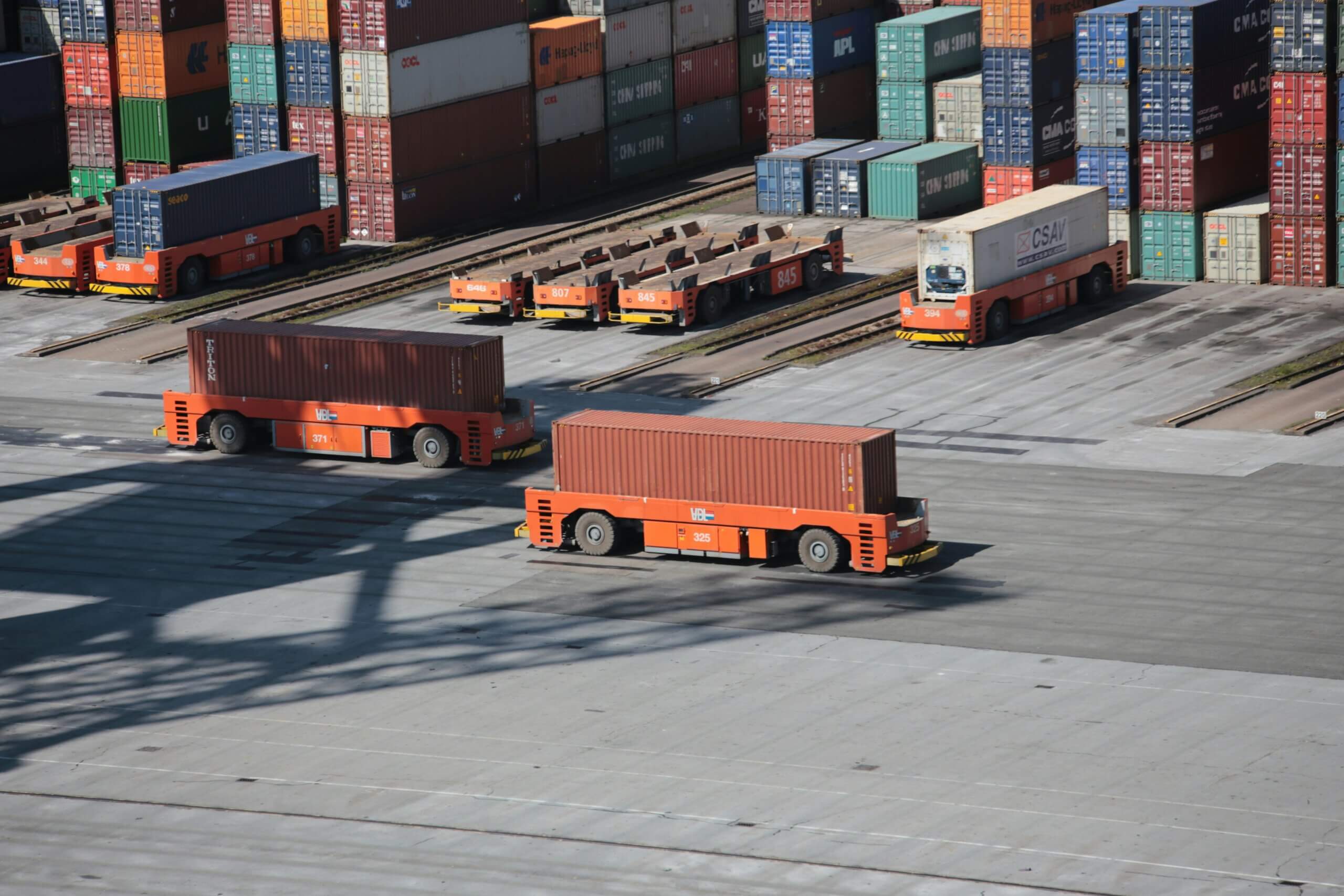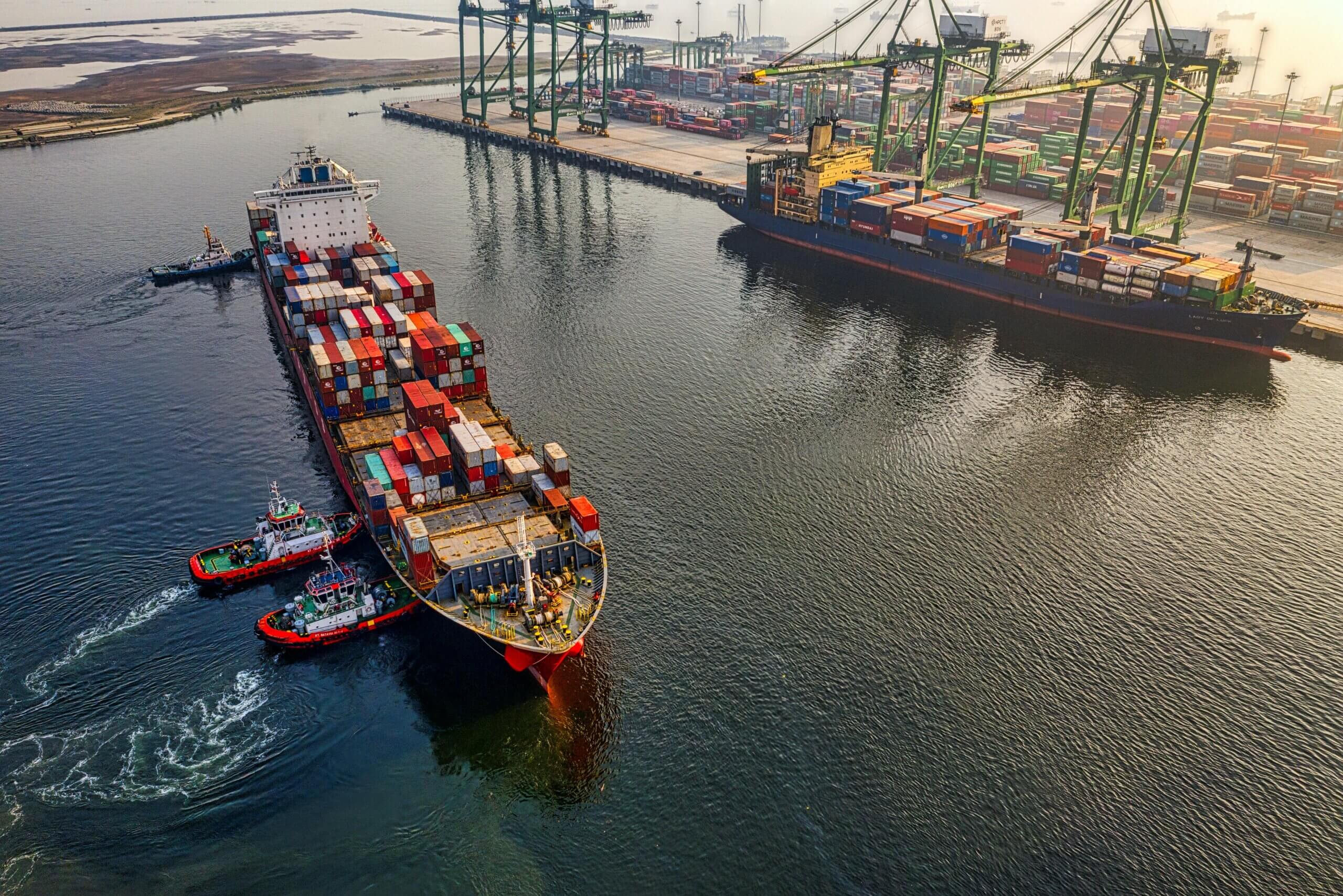If I had to choose a supply chain buzzword for 2022, it would be “agility.” Lately, it seems like that’s all anyone can talk about. Every social post, blog, and email is shouting the news that achieving agility is critical to saving costs and being more efficient. The problem is that none of this content explains exactly how to become more agile.
My project44 colleague, solution engineer Elizabeth Labuzienski, and I decided to tackle this issue head on in a webinar, From Buzzword to Reality: 7 Ways to Actually Increase Supply Chain Agility. In this hour-long presentation, we walk through concrete examples of practical and proven ways our supply chain visibility platform – Movement – can help reduce delays, improve overall efficiency, and cut costs. We also share real-world customer stories that demystify the concept of agility.
This post is the first in a three-part series that covers the seven key ways supply chain professionals can move beyond buzzwords to make a real difference in their organization’s agility and – ultimately – efficiency and profitability. In this first installment, we cover strategies and tactics related to planning. In parts two and three, we look at strategies to improve in-transit efficiency and process automation.
1. Pivot quickly to redirect ocean shipments based on recent data and trends
The Challenge:
You already know that supply chain success depends heavily on being able to navigate and adapt in real time to unexpected events. There are dozens of factors outside your control that create uncertainty and instability in any supply chain: pandemic fallout, weather events, the climate crisis, labor strikes and shortages, and so on.
The trouble is, many logistics professionals don’t have centralized access to specific dwell times at various ports. Instead, they have to rely on a proverbial black box – a supply chain management tool or process that doesn’t provide access to the information they need to accurately predict transit and delivery times, never mind downstream delays.
The Risk Factors:
Without a single, centralized source of truth, logistics folks are forced to handle issues by making their best guess instead of making confident decisions based on reliable real-time data. The result is a haphazard decision-making process that can quickly become costly. In some cases, uncertainty may lead the logistics team to hedge their bets by sticking with the status quo, which may or may not be the best response to a changing situation. Alternatively, the team may resort to making decisions based on gut feelings, which may have the opposite of the intended effect and cause more gridlock and inefficiency.
How Movement from project44 Can Help:
The Port Intel dashboard within the Movement platform provides a much better way to handle supply chain disruption. It provides a global view of all dwell times and vessel activity across 11,800 berths with 20-meter precision. This centralized resource provides a source of truth you can use to confidently overcome port delays and easily mitigate the impact of some of the most common maritime disruptions.
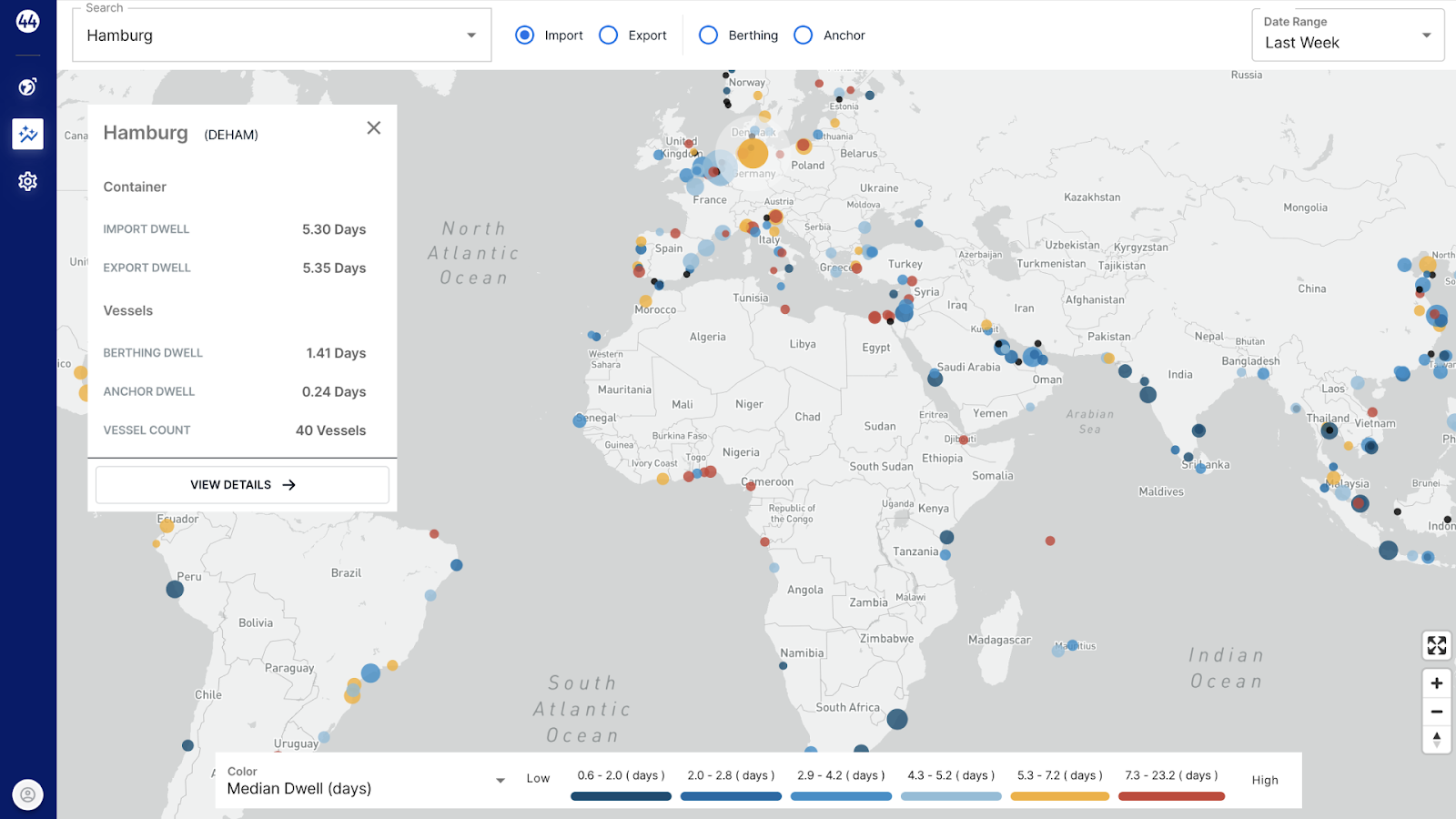
Benefits:
Plan proactively, respond to disruptions, and meet and exceed customer expectations by dealing with issues up front so there’s never an issue downstream.
Confidently make smart decisions about how to pivot quickly and redirect ocean shipments so you can leverage ports with shorter dwell times.
Proactively communicate downstream to customers, carriers, and other teammates with ease.
Real-world Use Case – Saving Time with Detailed Data on Port Dwell Times:
A customer who was exporting from the east coast of North America primarily through the Port of Savannah and the Port of Charleston used Movement’s Port Intel dashboard to selectively ship out of the port with the lower dwell times. Using the dashboard, they could clearly see a four-day delta between the dwell times at the two ports. With this information, they were able to develop a data-based strategy to pivot to the most efficient route. Ultimately, their decision saved them critical time, allowed them to take advantage of the most cost-effective delivery option, and enabled them to exceed customer delivery expectations.
2. Optimize carrier and lane performance with actionable insights
The Challenge:
As the saying goes, you can’t optimize what you can’t measure. A lack of quality reporting and analytics makes it almost impossible for logistics professionals to accurately evaluate their supply chain. From details on accessible carriers, lane data, and carriers who specialize shipping certain types of goods (ie perishables) or have high volume and availability in specific regions to relevant information on factors like driver shortages and labor disputes, there is typically a vast gap between what a logistics team needs to know, and what they can actually access. And the information they do have is typically sourced through an arduous process that involves manually tracking data from multiple sources. This approach is both highly inefficient and rife with the potential for error.
The Risk Factors:
The lack of actionable data and insights creates two specific risk factors. First, the need to cobble together a manual solution slows down day-to-day operations both because it eats up a lot of time and because partial or out-of-date information can send your team running in circles. Second, a lack of reliable, current data makes it much harder to effectively communicate and negotiate with carriers. Without having data to back up your negotiations, you can miss out on important opportunities.
How Movement from project44 Can Help:
The Movement platform puts carrier data and performance by carrier and by lane at your fingertips. This fast and easy access allows you to quickly understand which carriers perform best in which regions and on which lanes.

The various reports that are available also help you drill down into specific questions. For instance, you can compare performance in real time or over a longer period of time. You can also look at sustainability factors like emissions.
Benefits:
Access centralized performance data quickly and easily.
Optimize carrier and lane performance based on on-time performances and – for ocean carriers – based on carbon emissions.
Enhance ability to negotiate successfully with carriers.
Real-world Use Case – Managing Emissions Goals:
As more industry and global regulations bring attention to what companies are emitting as part of their Scope 1, Scope 2, and Scope 3 emissions, it is becoming increasingly important to track and manage related data for your supply chain. Using the reports in the Movement platform, our customers can look at emissions by carrier to see how cleanly different steamship lines operate based on engine type, container capacity, and other variables. This information is invaluable for driving fast, accurate decisions about which carrier will help you reach and maintain your emissions goals.

3. Reduce delays and exceptions by getting ahead of inventory constraints
The Challenge:
Planning at the inventory level is a big and often challenging job. For organizations with visibility, inventory is often tracked at the asset level rather than the order level, which can make it difficult to get an accurate view of inventory in transit. Organizations without visibility can find themselves having to make a best guess about how to get the right amount of stock to each location.
The Risk Factors:
There are two negative scenarios you might face if you don’t have the data you need to manage your inventory: having too much stock or not having enough stock.
In general, when a logistics team isn’t sure of what’s in transit, there is a tendency to overcompensate by buffering or sending too much inventory to a location. This safety stock limits cash on hand, which is particularly ill advised in the current economic environment.
On the other end of the spectrum, lack of visibility into inventory in transit can result in an inability to get goods to designated locations on schedule, which results in stock-outs. This situation creates a terrible customer experience that greatly impacts customer satisfaction in the moment, and loyalty over the long term.
How Movement from project44 Can Help:
The Movement platform provides in-transit visibility at the SKU level by associating order data with shipments being tracked. This can be absolutely transformational for those managing production schedules or fulfilling direct customer orders.
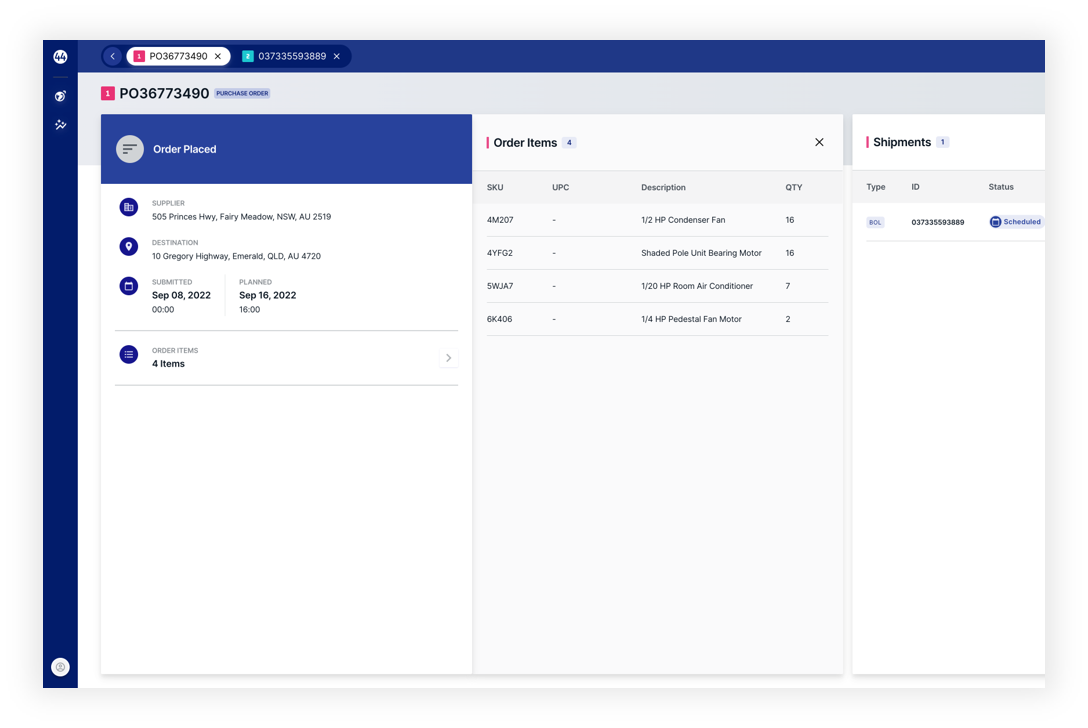
Movement also allows logistics teams to easily view and investigate the relationships between orders and shipments, and to track potential delays via predictive ETAs. This makes it easy to see and manage goods based on whatever reference matters most – order number, bill of lading, etc.
Benefits:
Reduce delays and exceptions by allowing you to approach your inventory allocation decisions with confidence.
Achieve greater delivery compliance by managing raw material shipments and production disruptions.
Real-world Use Case – Avoiding Production Line Shutdown:
A manufacturing customer was dealing with delayed production materials. They saw a seven-day delay in their Movement dashboard, and were able to retrofit their production line to avoid a six-day shutdown while waiting for the delayed delivery. Instead, they adjusted the production schedule to work on products for which they already had materials on hand. Movement’s predictive ETAs for earlier in the product life cycle enabled the customer to make very nimble decisions for their production planning.
What You Don’t Know Can Definitely Hurt You
When it comes to supply chain logistics, success is all about having the right information at the right time so you can make the right decisions instead of relying on gut instincts or what worked last time. You need the centralized, accurate, real-time data that makes it easier to proactively manage your shipments, anticipate issues so you can head them off before they become actual problems, and keep everyone – from company leadership to customers – happy.
If you’d like to hear more about these three planning-related strategies as well as the other strategies we’ll talk about in the next two installments of this series, you can tune in to view the on-demand webinar replay.
